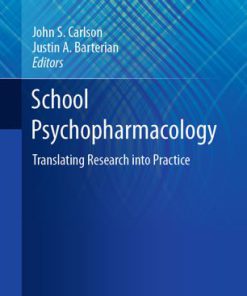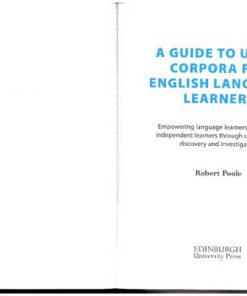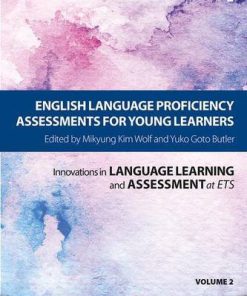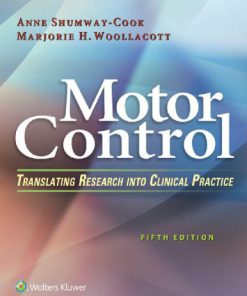Assessment and Intervention for English Language Learners Translating Research into Practice 1st Edition by Susan Unruh, Nancy McKellar 3319526454 9783319526454
$50.00 Original price was: $50.00.$25.00Current price is: $25.00.
Assessment and Intervention for English Language Learners Translating Research into Practice 1st Edition by Susan Unruh, Nancy A. McKellar – Ebook PDF Instant Download/DeliveryISBN: 3319526454, 9783319526454
Full download Assessment and Intervention for English Language Learners Translating Research into Practice 1st Edition after payment.
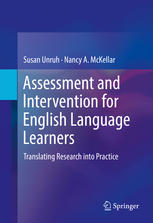
Product details:
ISBN-10 : 3319526454
ISBN-13 : 9783319526454
Author: Susan Unruh, Nancy A. McKellar
This book presents evidence-based practices for appropriate assessment of and school-based services for young English language learners. It identifies and addresses the challenges of assessing and intervening with these students at the curricular, instructional, environmental, and individual levels, particularly the complexities of determining the presence or absence of learning disabilities. Case studies and comparisons with fluent English speakers illustrate the screening and evaluation process – including multi-tier system of supports (MTSS) and response to intervention (RTI) – and proactive intervention planning in core literacy and math domains. Together, these chapters model effective teaching practice, advocacy, and teamwork with parents and colleagues as well as policy development toward meeting the needs of this diverse student population. This invaluable guide: Examines challenges of data collection when working with English language learners. Traces the development of dual-language fluency and competence. Discusses language-acquisition issues affecting oral language assessment. Reviews commonly used assessment and intervention tools in use with English learners. Features specialized chapters relating to reading, writing, and mathematics competencies. Can be used regardless of first language spoken by students. Assessment and Intervention for English Language Learners is an essential resource for researchers, professionals, and graduate students in diverse fields including school and clinical child psychology; assessment, testing, and evaluation; language education; special education; and educational psychology.
Assessment and Intervention for English Language Learners Translating Research into Practice 1st Table of contents:
Chapter 1: The Challenges of Assessing and Intervening with English Learners
Introduction
Definitions
Areas to Investigate When Students Struggle: Curriculum, Instruction, Environment, and the Learn
Curriculum
Instruction
Environment
The Learner
What Is the Typical Path to a Comprehensive Evaluation and What Are the Additional Challenges
A Brief Explanation of Universal Screening for Multitiered Systems of Support (MTSS) or Response
For Fluent English Speakers
For English Learners
Development of Tier Interventions
For Fluent English Speakers
For English Learners
The Involvement of a Problem-Solving Team
For Fluent English Speakers
For English Learners
What Happens When It Is Determined by a Problem-Solving Team That a Comprehensive Evaluation Is
For Fluent English Speakers
For English Learners
What Is Needed in Schools and Districts to Meet the Needs of English Language Learners?
References
Chapter 2: Dual-Language Learner Development
Introduction
How Do Neuroscientists Study What Is Happening in the Brain as Students Learn Oral and Written
What Is Brain Plasticity?
What Are the Different Aspects of Oral and Written Language That the Brain Must Process?
Oral Language: How Does the Brain Learn to Speak and Understand a First Language?
How Does the Bilingual Brain Differ from the Monolingual Brain?
How Does Learning English as a Second Language Interact with the Student’s First Language?
Is There a Difference Between Language Learned at Home, in the Community, and at School?
What Behaviors Will Educators See in English Learners as Their Skills Develop?
References
Chapter 3: Data Collection When Working with English Learners
Introduction: Record Review, Interviews, Observations, and Tests (RIOT)
Record Review: What Records Are Typically Reviewed During the Problem-Solving Process?
What Additional Records Are Available for English Learners?
Interviews: Who Should Be Interviewed and What Information Should Be Gathered?
Observations
Portfolio Assessment
Tests
How Are Tests Typically Used by School Psychologists for Helping to Diagnose Specific Learning D
Models of Determining Specific Learning Disability Program Eligibility
The Severe Discrepancy Model
The Pattern of Strengths and Weaknesses (PSW) Model
The Response to Intervention (RTI) Model
When Is It Appropriate to Test an English Learners’ Skills in Their Native Language?
What Are Guidelines for Selecting Tests to Use with English Learners?
Test Highlight: The Developmental Profile-Third Edition (DP-3)
What Is the Process of Intervention for English Learners?
Using Evidence-Based Interventions
Where to Find Interventions
What Are Recommended Classroom Instruction and Practices for English Learners?
References
Chapter 4: Oral Language Issues and Assessment of Oral Language
Introduction
Why Is a Measure of Language Proficiency So Important?
Should We Wait to Do a Comprehensive Psychoeducational Assessment Until the Student Has Reache
What Information Is Gathered When the English Learner Enrolls in School?
What Are Ways to Gather Information About Oral Language Proficiency in the First Language?
Record Review
Interviews
Observations
Tests
What Tests Can Be Used to Assess a Student’s English Language Proficiency?
Test Highlight: The LAS-Links Online
What Tests Can Be Used to Assess Students’ Proficiency in Their First Language?
Assessments in Any Language
Assessments in Spanish
Test Highlight: The Woodcock-Muñoz Language Survey-Revised Normative Update (WMLS-R NU)
References
Chapter 5: Word Reading and Decoding
Introduction
What to Know Before Word Reading Assessment and Intervention
What Is Happening in the Brain as the Individual Begins to Learn to Read?
The Auditory System and the Linguistic System
The Visual System and the Linguistic System
The Roles of Emotions, Attention, Motivation, and Sleep in Learning to Read
Review of the Brain Processes in Reading
Is the Process of Decoding the Same in All Languages?
What Is Happening in the Brains of Children Who Have Difficulty Learning to Read in English?
What Are Valid Ways to Make Special Education Eligibility Decisions About English Learners?
Multiple Indicators of a Disorder of Decoding and Word Reading
Observations of Clinical Signs
Record Review
Interviews
Tests
How Do We Use Tests with English Learners to Determine Disorders of Decoding and Word Reading?
Test Highlight: The Diagnostic Assessments of Reading-Second Edition (DAR-2)
Test-Teach-Test Assessments
Teaching and Intervening
What Are Characteristics of Good Classroom Instruction for English Learners?
What Are Interventions to Improve English Learners’ Reading Decoding?
Supplemental Phonics-Based Instruction
Interventions Necessitating the Use of Spanish
References
Chapter 6: Reading Fluency and Vocabulary
Introduction
What to Know Before Reading Fluency Assessment and Intervention
What Is the Relationship Between Vocabulary and Fluency in Reading?
Besides Vocabulary, What Other Factors Lead to Fluent Reading?
What Is the Effect of the Language’s Orthography on Reading Fluency?
What Is the Relationship Between Fluency and Comprehension?
Multiple Indicators of a Disorder of Reading Fluency
Observations of Clinical Signs
Record Review
Interviews
What Are the Cognitive Skills That Correlate with Reading Fluency and Vocabulary Skills?
Tests
When Is It Appropriate to Test an English Learner’s Reading Fluency Skills in His or Her Nativ
How Do We Use Tests with English Learners to Determine Disorders of Reading Fluency?
Test Highlight: The Bilingual Verbal Ability Tests-Normative Update (BVAT-NU)
Test-Teach-Test Assessments
Teaching and Intervening
What Are Characteristics of Good Classroom Instruction for English Learners?
Which Words Should Be the Focus of Instruction in Vocabulary?
What Are Interventions to Improve English Learners’ Reading Fluency?
Paired Reading Strategy
Reference for Interventions Necessitating the Use of Spanish
References
Chapter 7: Reading Comprehension
Introduction
What to Know Before Reading Comprehension Assessment and Intervention
What Is Happening in the Brain During Reading Comprehension?
What Role Does Background Knowledge Play in Reading?
What Is Verbal Intelligence and How Does It Affect Reading Comprehension?
What Are Higher Level Thinking Skills and How Do They Affect Reading Comprehension?
Does Reading Comprehension Differ Based on Orthography?
Multiple Indicators of a Disorder of Reading Comprehension
Observations of Clinical Signs
Record Review
Interviews
Tests
When Is It Appropriate to Test English Learners’ Reading Comprehension in Their Native Language
How Do We Use Tests with English Learners to Determine Reading Comprehension Disorders?
Test Highlight: Cloze and Maze Procedures
Test-Teach-Test Assessments
Question Schemes
Story Retelling
Teaching and Intervening
What Are Characteristics of Good Classroom Instruction for English Learners?
What Are Interventions to Improve English Learners’ Reading Comprehension Skills?
Enhanced Reciprocal Teaching with Small Groups
Self-Questioning Strategy
References
Chapter 8: Math Calculation
Introduction
Why Should Math Calculation Be of Concern to Educators of English Learners? Isn’t It Essentia
What to Know Before Calculation Assessment and Intervention
What Is Happening in the Brain of a Child Who Struggles with Math Calculation
What Special Considerations Relate to the Education of English Learners in Math?
Mathematics Is a Language
Code Switching
Nonlanguage Math Differences Around the World
Learning and Reviewing Prerequisite Skills
What Is Number Sense and Why Is It Important?
What Can We Learn from Students’ Mistakes?
Multiple Indicators of a Disorder of Math Calculation
Observations of Clinical Signs
Record Review
Interviews
Tests
When Is It Appropriate to Test an English Learner’s Math Calculation Skills in His or Her Nati
How Do We Use Tests with English Learners to Determine Math Calculation Disorders?
Test Highlight: The Kaufman Test of Educational Achievement-Third Edition (KTEA-3)
Test-Teach-Test Assessments
Teaching and Intervening
What Interventions Should Be Considered to Improve Math Calculation Skills of English Learners?
General Interventions Recommended for English Learners
Interventions for Algorithm Errors
Use of Visual Representations
Outline Placeholder
References
Chapter 9: Math Problem-Solving
What to Know Before Math Problem-Solving Assessment and Intervention
How Can Language Proficiency Be Disentangled from Math Problem-Solving Skills?
What Is Number Sense and Why Is It Important?
Multiple Indicators of a Disorder of Mathematics Problem-Solving
Observations of Clinical Signs
Record Review
Interviews
Tests
When Is It Appropriate to Test an English Learner’s Math Problem-Solving Skills in His or He
How Do We Use Tests with English Learners to Determine Math Problem-Solving Disorders?
Test Highlight: The Test of Early Mathematics Ability-Third Edition (TEMA-3)
Test-Teach-Test Assessments
Teaching and Intervening
What Are Characteristics of Good Classroom Instruction for English Learners?
What Are Mistakes to Avoid?
Avoid Stressing Quantity Over Quality
Avoid Ignoring the Language Demands and Cultural Context of the Word Problem
Avoid Asking “Do You Understand?” and Taking “Yes” for an Answer
Avoid Teaching Strategies for Key Words
What Are Evidence-Based Interventions to Improve English Learners’ Math Problem-Solving?
Worked Example Strategy
Three Reads Strategy
Dynamic Strategic Math
References
Chapter 10: Written Expression
Introduction
What to Know Before Writing Disorder Assessment and Intervention
What Is Happening in the Brain and the Muscles During Writing?
How Does Normal Spelling Develop?
Multiple Indicators of a Writing Disorder
Observations of Clinical Signs
Record Review
Interviews
Tests
How Do We Use Tests with English Learners to Determine Writing Disorders?
Test Highlight: The Test of Early Written Language-Third Edition (TEWL-3).
Test-Teach-Test Assessments
Teaching and Intervening
What Are Characteristics of Good Classroom Instruction for English Learners?
What Are Interventions to Improve English Learners’ Written Expression?
Explicit Instruction in Revision Strategies
References
Chapter 11: Assessment and Intervention Tools
Introduction
Tests for Use with English Learners
Dynamic Assessment or Test-Teach-Test
Intervening
Can’t Do–Won’t Do Assessment
Figuring Effect Sizes
Instructional Resources
References
Chapter 12: Case Studies
Sample Case: Laila
Confidential Psychoeducational Report
Reason for Referral
Background Information
Previous Test Results and Vision and Hearing Screenings
Assessment Measures and Procedures
Test Behavior and Observations
Analysis and Interpretation of Test Results
Language Proficiency
Intellectual Functioning
Academic Functioning
Adaptive Behavior and Social/Emotional/Behavioral Functioning
Summary and Recommendations
Sample Case: Ricardo
Confidential Psychoeducational Report
Reason for Referral
Background Information
Previous Test Results and Vision and Hearing Screenings
Assessment Measures and Procedures
Test Behavior and Observations
Analysis and Interpretation of Test Results
Language Proficiency
Intellectual Functioning
Academic Functioning
Adaptive Behavior
Social/Emotional/Behavioral Functioning
Summary and Recommendations
People also search for Assessment and Intervention for English Language Learners Translating Research into Practice 1st:
assessment for english language learners
assessment for english learners
assessment and evaluation in bilingual education
english language arts interventions
language assessment and intervention
Tags: Assessment, Intervention, English Language, Translating Research, Susan Unruh, Nancy McKellar
You may also like…
Languages - Japanese Language Reference
Linguistics - Linguistics
A Guide to Using Corpora for English Language Learners 1st Edition Robert Poole
dictionaries & phrasebooks
dictionaries & phrasebooks
Uncategorized





